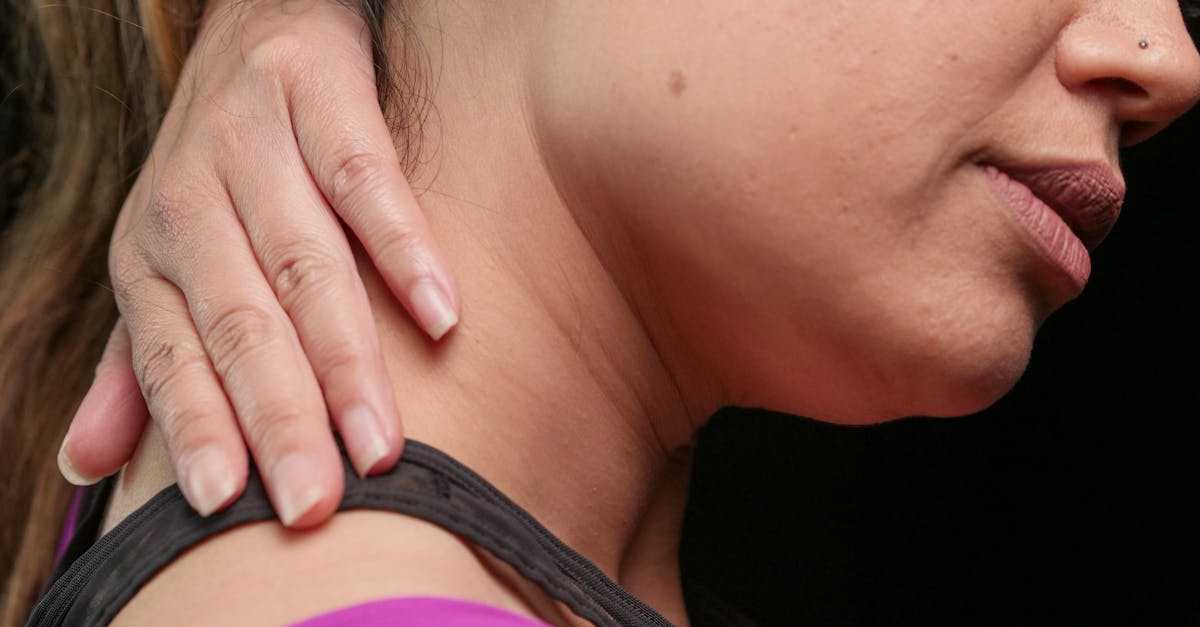In Short, capsulitis, specifically adhesive capsulitis, is a painful condition characterized by stiffness and limited range of motion in the shoulder. Utilizing gentle manual techniques helps to gradually enhance movement, relieve discomfort, and restore function in the affected joint. The benefits of these techniques include increased blood flow, reduced muscle viscosity, and improved flexibility. This approach focuses on targeted interventions that mobilize tight joint structures, making it an effective way to address the symptoms of frozen shoulder while being pain-free and accessible to individuals experiencing these challenges. |
Capsulitis, commonly known as *frozen shoulder*, is characterized by stiffness and pain in the shoulder joint due to inflammation. One effective approach to relieve symptoms involves the use of gentle manual techniques, including joint mobilizations, soft tissue techniques, and specific stretches. These methods aim to enhance range of motion, decrease muscle viscosity, and increase blood flow to the affected area. By employing these manual therapy techniques, patients can experience a gradual thawing of the shoulder, leading to improved mobility and a significant reduction in discomfort.

Welcome to Pulse Align, where we prioritize your well-being through innovative, non-invasive methods designed to restore your body’s natural balance and posture. Our gentle approach utilizes imperceptible pulses that promote muscle tone symmetry, contributing to a more comfortable experience and improved functionality.
The Pulse Align Approach
At Pulse Align, we believe in supporting the body’s natural processes rather than focusing on discomfort or conditions directly. By encouraging the body to recalibrate itself, our services can lead to a harmonious shift in posture, which often results in enhanced comfort. We focus on creating a balanced musculoskeletal framework that feels good and operates effectively, allowing you to enjoy life to the fullest.
Personalized Wellness Experience
Our client-centric approach ensures that every individual receives personalized care, tailored to their unique wellness journey. Many clients who have engaged with our services report notable improvements in various aspects of their well-being, including reduced tension in the neck and back, improved postural balance, and enhanced overall wellness. We are proud to foster an environment where clients can thrive through natural realignment.
Your Invitation to Explore Pulse Align
We invite you to visit the Pulse Align website, where you can find more information about our services and locate a clinic near you. Whether you’re in La Prairie, Mont-Royal, Terrebonne, or other nearby areas, our focus is on promoting family wellness—a journey suitable for everyone, including children and expectant mothers. Remember, Pulse Align complements your existing healthcare journey by supporting your body’s natural capacity for balance and well-being.
Discover more and schedule a consultation today! Experience the safe, non-invasive, and family-friendly approach of Pulse Align by visiting our website now.
Medical Disclaimer
The services provided by Pulse Align complement, but do not replace, medical care. Clients are encouraged to remain under the guidance of their healthcare professionals for any medical condition. Reported improvements are attributed to the body’s natural ability to restore balance.
Gentle Manual Techniques for Capsulitis
- Joint Mobilizations: Gentle movements to improve the mobility of the shoulder joint.
- Scapular Mobilization: Techniques aimed at enhancing scapular function and alignment.
- Soft Tissue Techniques: Focus on releasing tension in surrounding muscles and connective tissues.
- Range of Motion Exercises: Specific movements to gradually increase flexibility and movement.
- Muscle Release Techniques: Gentle pressure applied to tight muscle areas to alleviate stiffness.
- Assisted Stretching: Collaborating with a therapist for guided stretches to ensure proper technique.

Understanding Capsulitis
Capsulitis, commonly known as frozen shoulder or adhesive capsulitis, is a condition characterized by stiffness and pain in the shoulder joint. It can significantly hinder daily activities and movement. However, adopting gentle manual techniques can be crucial in alleviating symptoms and restoring mobility. This article will explore various manual therapy methods, including joint mobilization and soft tissue techniques, aimed at helping individuals manage and overcome the discomfort associated with capsulitis.
The Importance of Manual Therapy
Manual therapy involves hands-on techniques aimed at improving shoulder function and reducing pain. For those dealing with capsulitis, these techniques are essential to mobilize the tight joint structures that characterize the condition. Gentle manipulation can enhance blood flow to the region, reduce muscle stiffness, and promote healing from within.
Joint Mobilization Techniques
One effective manual technique is joint mobilization, which focuses on gently moving the shoulder joint in specific directions. For a patient experiencing capsulitis, this can involve lying on their side with their affected arm in a stabilized position. By applying gentle pressure and allowing the shoulder to rotate, the therapist helps to gradually increase the range of motion. It is crucial that the pressure applied is neither too hard nor too soft, striking a delicate balance for optimal benefit.
Scapular Mobilization
Scapular mobilization is another technique used to alleviate discomfort from frozen shoulder. This method involves manipulating the scapula, or shoulder blade, to improve its mobility. The therapist may guide the scapula through gentle movements that encourage the muscles surrounding the shoulder to relax. This technique also aids in reducing pain and enhancing overall shoulder function, ultimately contributing to a more holistic recovery.
Soft Tissue Release Techniques
Soft tissue techniques focus on relieving tension in the muscles surrounding the shoulder joint. Specific massage techniques help in gently stretching the muscles and fascia that may have tightened due to prolonged immobility. This release can enhance blood flow while decreasing muscle viscosity, which is particularly beneficial for patients experiencing the stiffness associated with capsulitis.
Gentle Stretching Exercises
In addition to manual therapy, gentle stretching exercises are invaluable in the management of capsulitis. Techniques such as standing with the affected arm away from a support surface and leaning towards it can promote movement. The inclusion of these stretches should always be approached with caution to avoid overexerting the shoulder, emphasizing the necessity of gentleness throughout.
Implementing a Holistic Recovery Strategy
Effective management of capsulitis involves more than just manual therapy; it requires a holistic approach that aligns with the principles promoted by Pulse Align. By integrating manual therapy with regular exercise, optimal nutrition, and mindful practices, individuals can promote their overall neuromuscular health. Engaging in breathing exercises and mindful movement can enhance the recalibration of the nervous system, thereby allowing for improved recovery and mobility.
| Technique | Wellness Focus |
| Joint Mobilization | Enhances mobility and promotes ease of movement, fostering a balanced joint function. |
| Scapular Mobilization | Encourages muscle balance around the shoulder, improving overall stability. |
| Soft Tissue Techniques | Relieves tension in affected muscles, supporting relaxation and natural realignment. |
| Stretches | Facilitates flexibility and prepares the body for functional movement. |
| Mild Resistance Exercises | Promotes strength restoration while maintaining a gentle approach to avoid strain. |
| Gentle Mobilization with Resistance | Aids in recalibrating natural body mechanics through controlled movement. |
| Active Range of Motion | Empowers individuals to engage their body actively, reinforcing their confidence. |
| Trigger Point Release | Targets specific areas of tension, aiding in overall relaxation and improved circulation. |
| Neural Mobilization | Supports the release of nerve tension, enhancing neurological balance and function. |
| Gentle Manipulation | Encourages a sense of well-being by restoring movement without aggressive techniques. |

Transformative Wellness Journeys with Gentle Manual Techniques
Clients struggling with capsulitis have discovered an invigorating path to recovery through the unique approach offered by Pulse Align. By employing gentle manual techniques, our specialists have helped many individuals restore their body’s natural ability to recalibrate and find balance, leading to improvements that often feel both immediate and lasting. Countless testimonials speak to the power of this holistic recovery process.
In areas such as La Prairie and Mont-Royal, clients have reported significant progress in their mobility and overall wellness. They have found that the tailored treatments at Pulse Align not only alleviate the discomfort associated with shoulder pain, but also support the body’s own healing mechanisms. This is particularly true for those experiencing the challenges of adhesive capsulitis, where regular sessions have facilitated remarkable changes in joint flexibility.
Terrebonne residents have particularly embraced these gentle yet effective methods. Many clients express gratitude for the supportive environment at Pulse Align, where practitioners work closely alongside healthcare teams to ensure a comprehensive approach to treatment. This partnership emphasizes the importance of addressing wellness from multiple angles, fostering a recovery journey that is as much about emotional support as it is about physical improvement.
Feedback from clients in Châteauguay and Saint-Jérôme highlights the sense of community found within Pulse Align’s clinics. They appreciate the emphasis on natural healing and the individualized care that has become a hallmark of our practice. It’s this dedication to promoting body function and enhancing overall well-being that draws clients back, time and again.
For those in Chicoutimi and Sainte-Marie, our gentle manual techniques have been game-changers in their attempts to manage capsulitis symptoms. Feedback consistently indicates that even clients who previously struggled with chronic pain are finding renewed hope and improved outcomes as part of their wellness journey at Pulse Align.
Discover more about how our clinics can support your journey to wellness at Our Clinics. United by a commitment to excellent care and supportive healing, Pulse Align stands ready to guide clients and their families through every step of the process.
Understanding Capsulitis: Gentle Manual Techniques
Capsulitis, commonly referred to as frozen shoulder or adhesive capsulitis, is a debilitating condition that affects the shoulder joint, leading to pain and restricted mobility. This condition often arises following prolonged immobility due to injury, surgery, or other medical issues. The shoulder joint’s natural capsule becomes inflamed and thickened, causing significant discomfort as well as difficulties in day-to-day activities. Among various treatment approaches, gentle manual techniques have emerged as an effective method for alleviating symptoms and restoring function.
Dr. Sylvain Desforges, an esteemed expert in osteopathy, naturopathy, and manual medicine, has dedicated his career to advancing healthcare practices, particularly in the realm of chronic pain management. As the founding president of TAGMED clinics and the ACMA association, he emphasizes the importance of innovative therapies and patient-centered care. His extensive background allows him to understand the intricate dynamics of conditions such as capsulitis and develop effective treatment protocols.
Gentle manual techniques in the context of capsulitis involve a range of hands-on approaches aimed at manipulating tight joint structures. These methods include joint mobilizations, soft tissue techniques, and targeted shoulder joint mobilization exercises designed to stretch and facilitate movement in the affected area. Such interventions are intended to slowly and gently increase the range of motion without exacerbating pain, making them particularly suitable for those who are suffering from the stiffness associated with frozen shoulder.
One prevalent technique involves a patient lying on their side, with their affected arm positioned correctly to facilitate a smooth rotational movement. Maintaining the elbow at a right angle, the individual can gently rotate the arm as if attempting to touch the thumb to a flat surface. This controlled motion helps in easing the tension built up in the shoulder capsule, ultimately fostering an improved ability to reach and move the arm freely.
Dr. Desforges advocates the role of manual therapy in enhancing mobility and stimulating recovery in individuals suffering from adhesive capsulitis. By applying gentle mobilization techniques, it is possible to enhance blood flow to the affected muscles and joint, promoting healing and reducing the viscosity of surrounding tissues. This blood flow helps flush out waste products and introduces nutrients essential for recovery, fostering a conducive environment for the healing process.
In addition to manual techniques, Dr. Desforges has integrated advanced technologies into his practice, focusing on the combination of traditional therapies with modern innovations. Techniques such as laser therapy and shockwave therapy have become supplementary tools in the management of capsulitis, offering patients diverse options tailored to their specific needs. His evidence-based approach ensures that patients receive care designed not only to relieve symptoms but also to empower them on their journey to recovery.
Ultimately, Dr. Sylvain Desforges’ commitment to providing evidence-based care in the context of chronic pain management, including conditions like capsulitis, embodies a holistic and patient-friendly philosophy. His extensive knowledge and practical application of gentle manual techniques serve as a beacon of hope for those suffering from frozen shoulder, guiding them toward renewed strength and mobility.
Understanding the TAGMED Neurovertebral Decompression Technology
Mechanism of Action
The neurovertebral decompression technology offered by TAGMED operates through a mechanism that applies controlled and progressive traction force on the spinal column. This innovative approach effectively creates an increased space between the vertebrae, which plays a crucial role in alleviating pressure on the intervertebral discs and nerve roots. By allowing for greater separation within the spinal structures, this technique significantly promotes improved fluid circulation within the targeted area. This enhancement in circulation is vital as it contributes to reducing inflammation and relieving pain, thereby aiding patients suffering from chronic pain and conditions such as herniated discs, buldging discs, or moderate to severe spinal stenosis and foramina stenosis.
Specific Advantages
One of the most compelling aspects of the TAGMED method is that it is a non-invasive treatment option. Patients experiencing chronic pain associated with the aforementioned conditions often find significant relief through this decompression technique. The reduction of pressure on nerve structures and the optimization of fluid circulation around the discs not only contribute to a significant reduction in discomfort but also foster a quicker recovery. As a result, patients report an enhanced quality of life, demonstrating the method’s effectiveness across a broad spectrum of individuals dealing with chronic conditions.
Comparison with Other Treatments
When juxtaposed with other commonly employed therapeutic approaches, the TAGMED neurovertebral decompression technology stands out for several reasons. Traditional treatment options such as analgesics, corticosteroid injections, surgical interventions, and conventional physical therapy can be invasive and may carry risks of complications. In contrast, the TAGMED method offers a compelling alternative by minimizing the need for invasive procedures and reducing the potential side effects associated with medications. Furthermore, many patients experience a faster recovery with this decompression technique, highlighting its unique advantages over traditional approaches.
Case Studies and Testimonials
Real-world applications of the TAGMED neurovertebral decompression technology demonstrate its effectiveness. Numerous patients have shared their positive experiences, detailing significant improvements in their conditions. For example, after undergoing treatment, individuals report a long-lasting decrease in pain, a swift return to their daily routines, and a marked reduction in dependence on pharmacological treatments. Such testimonials provide compelling evidence for the efficacy of this innovative approach, showcasing the potential for improved health and functionality in those grappling with chronic pain conditions.
Understanding Capsulitis: Gentle Manual Techniques
Capsulitis, commonly known as frozen shoulder or adhesive capsulitis, is a condition characterized by stiffness and pain in the shoulder joint. This debilitating ailment can significantly hinder daily activities, making simple tasks like reaching for an object or lifting a bag quite challenging. Fortunately, specific gentle manual techniques have emerged as effective approaches in managing and alleviating the symptoms of this condition.
One of the primary techniques used in addressing capsulitis is manual therapy. This involves hands-on manipulation of the joint to enhance mobility and reduce stiffness. Specific movements focus on gradually mobilizing the shoulder joint, ensuring that the therapist applies the right intensity—not too hard, nor too soft. This balance is crucial for promoting a safe and effective recovery process.
Exercises designed to aid in the rehabilitation of capsulitis often start with gentle stretching. For example, engaging in movements that involve rotating the arm with the elbow kept at a right angle helps maintain the range of motion without putting undue strain on the shoulder. These stretches, when performed consistently, can gradually improve flexibility and alleviate discomfort.
Additionally, combining manual therapy with targeted exercises can facilitate better blood flow to the shoulder area, which is essential in reducing muscle viscosity and promoting healing. As the treatment progresses through various phases, therapists may adapt their approaches, ensuring that recovery remains aligned with the patient’s individual needs.
Ultimately, embracing these gentle manual techniques provides a pathway for individuals suffering from capsulitis to regain control over their shoulder mobility. By focusing on gradual improvements and fostering a supportive therapeutic environment, those affected can navigate their healing journey with strength and resilience.

Do you suffer from a chronic condition that responds little or not at all to conservative treatments?
At Pulse Align, we understand the desire to find gentle, innovative solutions that resonate with your body’s natural balance. Our non-invasive method employs gentle, imperceptible pulses aimed at supporting your body’s natural recalibration process. This approach can lead to a serene state of balance, promoting improved posture and helping to alleviate muscle and joint tension in a holistic, effective manner.
Rather than focusing on specific discomforts, Pulse Align empowers the body to recalibrate itself naturally. Our methods can yield amazing improvements in overall comfort and posture. Our core belief is that by supporting the body’s inherent abilities, clients often experience a newfound sense of harmony and vitality that can enhance their daily lives. Through our unique approach, we inspire clients to engage with their bodies in a fresh and positive way.
We pride ourselves on a personalized approach, with testimonials reflecting the voices of clients who have enjoyed notable improvements in their overall wellness journey. Many have shared experiences of reduced tension in the neck and back, a sense of calmness, and enhanced overall well-being. At Pulse Align, we center our focus around you—the client—ensuring a nurturing environment that fosters your individual strengths and supports your aspirations for a balanced lifestyle.
Explore more about what we offer at the Pulse Align website, where you can find your nearest location in cities like La Prairie, Mont-Royal, Terrebonne, and others. By booking a consultation, you’re taking the first step towards discovering how Pulse Align can complement your wellness journey, working in tandem with your healthcare services. Remember, our approach is non-invasive, safe for the whole family, including young children and pregnant women, ensuring everyone can enjoy its benefits.
To learn more about our services and book an appointment, visit our website: Pulse Align.
Frequently Asked Questions
Shoulder Pain
- Can a shoulder dislocation cause chronic pain?Yes, a poorly managed or repeated dislocation can lead to instability and long-term shoulder pain.
- Can referred pain to the shoulder come from another organ?Yes, liver, gallbladder, or heart issues can sometimes cause referred pain in the shoulder.
- Does poor blood circulation influence shoulder pain?Reduced blood flow may slow healing and increase stiffness, contributing to persistent pain.
- Can acupuncture help?Acupuncture may relieve pain and muscle tension, but effectiveness varies among individuals.
- Do wall push-ups relieve shoulder pain?They can gently strengthen stabilizing muscles, but should be done without pain.
- Is rest necessary to relieve shoulder pain?Relative rest is often recommended, avoiding painful movements but not immobilizing the joint entirely.
- Can I prevent shoulder pain?By maintaining good posture, strengthening the rotator cuff, avoiding excessive repetitive motions, and warming up before exercise.
- Do stretches help relieve shoulder pain?Regular, gentle stretching can improve joint flexibility and reduce muscle tension around the shoulder.
- Do relaxation techniques help reduce shoulder pain?Yes, they reduce stress, muscle tension, and can aid recovery.
- Is shoulder pain related to poor posture?Yes, slouched posture, rounded shoulders, and inadequate back support can contribute to shoulder tension.
Simon Leroy understands that shoulder pain can do more than slow you down—it can impact your entire quality of life. As a Shoulder Pain Awareness Advocate at Pulse Align, he’s dedicated to showing readers that genuine relief is not just possible, but within reach. Drawing on the latest research, Simon combines expert insights with compassionate guidance, inspiring people to move toward greater comfort and mobility. His approach is about more than just managing symptoms; it’s about empowering individuals to rediscover their strength and embrace every moment, free from the constraints of pain.
Medical Disclaimer
The information and advice provided on this site do not replace the advice, diagnosis, or treatment of a healthcare professional. Please note that the author of this article is neither a doctor nor a specialist in a medical specialty as defined by the Collège des médecins du Québec. Manual medicine, functional medicine, and sports medicine as described on this site exclude any medical treatment or diagnosis made by a doctor or medical specialist. Always consult your doctor for any medical questions. For more details, please read our complete Legal Notice.
References
- Seah, Pei Zhen, et al. “Risk Stratification of Paediatric Sports Injuries Seen at a Tertiary Hospital.” Ann Acad Med Singap, vol. 49, 2020, pp. 955–62, https://www.annals.edu.sg/pdf/49VolNo12Dec2020/V49N12p955.pdf.
- Jarraya, Mohamed, et al. “Sports Injuries at the Rio de Janeiro 2016 Summer Paralympic Games: Use of Diagnostic Imaging Services.” European Radiology, vol. 31, no. 9, 2021, pp. 6768–79, https://doi.org/10.1007/s00330-021-07802-3.
- Kaynaroğlu, Volkan, and Yusuf Alper Kiliç. “Archery-Related Sports Injuries.” Sports Injuries, edited by Mahmut Nedim Doral, Springer Berlin Heidelberg, 2012, pp. 1081–86, https://doi.org/10.1007/978-3-642-15630-4_143.
- Nielsen, Jesper Möller, and Mats Hammar. “Sports Injuries and Oral Contraceptive Use: Is There a Relationship?” Sports Medicine, vol. 12, no. 3, 1991, pp. 152–60, https://doi.org/10.2165/00007256-199112030-00002.
- Bahr, Roald, and Sverre Mæhlum. Clinical Guide to Sports Injuries. Human Kinetics, 2004, https://books.google.com/books?hl=fr&lr=&id=mmRnr0x0p4QC&oi=fnd&pg=PA86&dq=%22sports+injuries%22+%2B+abdomen&ots=mF6T-o_I4q&sig=CtFsHciVC0aKP7AIcw-wVJdjT6k.
- Guermazi, Ali, et al. “Sports Injuries at the Rio de Janeiro 2016 Summer Olympics: Use of Diagnostic Imaging Services.” Radiology, vol. 287, no. 3, 2018, pp. 922–32, https://doi.org/10.1148/radiol.2018171510.
- Liu, Tao. “Impact of Posture and Recovery Methods on Sports Injuries.” Revista Brasileira de Medicina Do Esporte, vol. 28, no. 6, 2022, pp. 719–22, https://www.scielo.br/j/rbme/a/BRzZwhZBjXSLYCHNH3PpDSL/?lang=en.
- Engebretsen, Lars, et al. “Sports Injuries and Illnesses during the Winter Olympic Games 2010.” British Journal of Sports Medicine, vol. 44, no. 11, 2010, pp. 772–80, https://bjsm.bmj.com/content/44/11/772.short.
- Jayashankar, Venati, and M. Srinivas Naik. “A Research Study on Deaths Due to Injuries to Abdomen Brought to Ananthapuram Govt. Medical College Mortuary, Andhra Pradesh from January 2010 to December 2016.” Medico-Legal Update, vol. 18, no. 2, 2018, pp. 181–84, https://www.indianjournals.com/ijor.aspx?target=ijor:mlu&volume=18&issue=2&article=040.
- Lenjani, Basri, et al. “Emergency Medical Care and Management of Sports Injuries on the Football Court.” Albanian Journal of Trauma and Emergency Surgery, vol. 5, no. 1, 2021, pp. 773–77, http://journal.astes.org.al/AJTES/index.php/AJTES/article/view/172.



